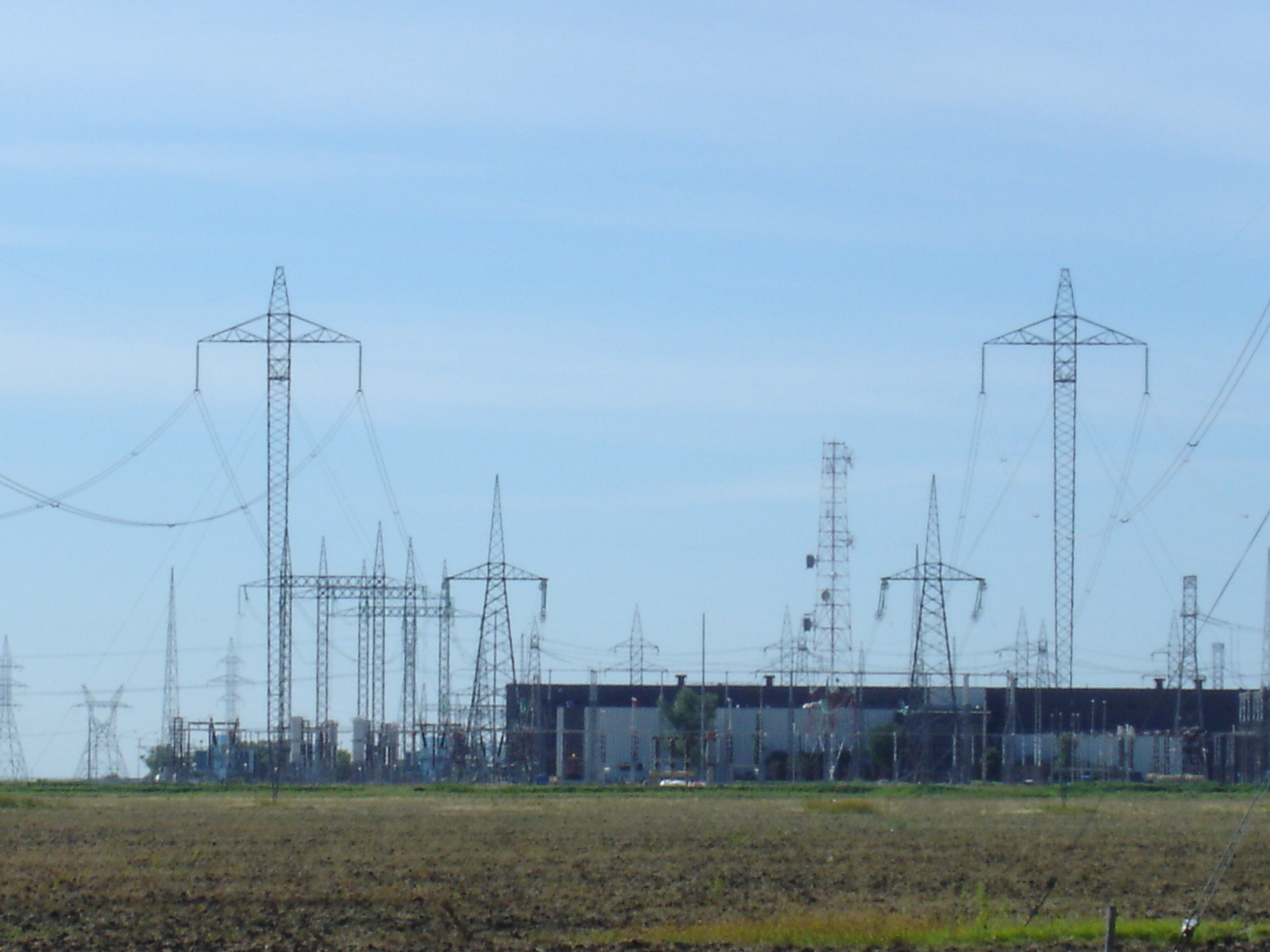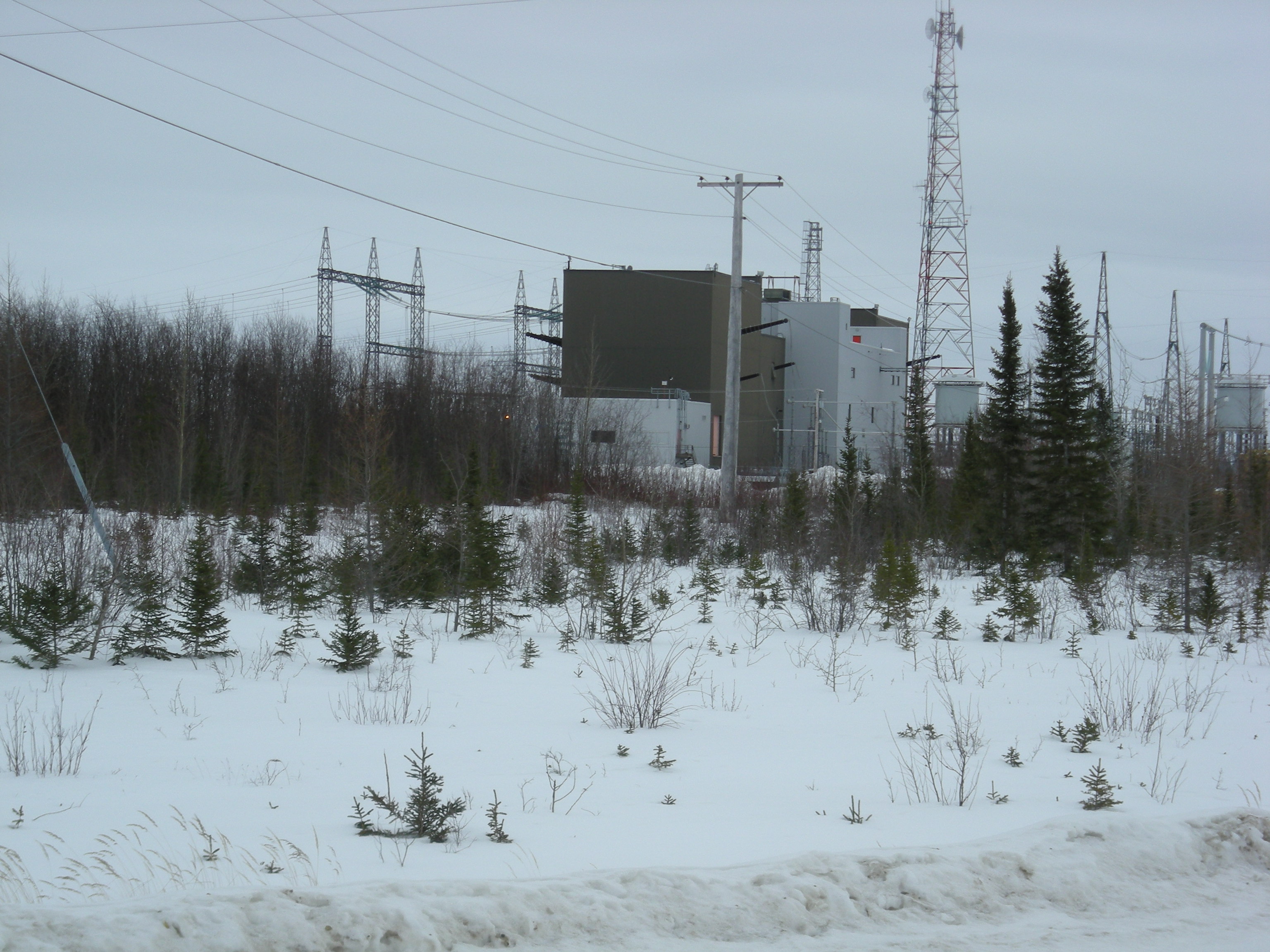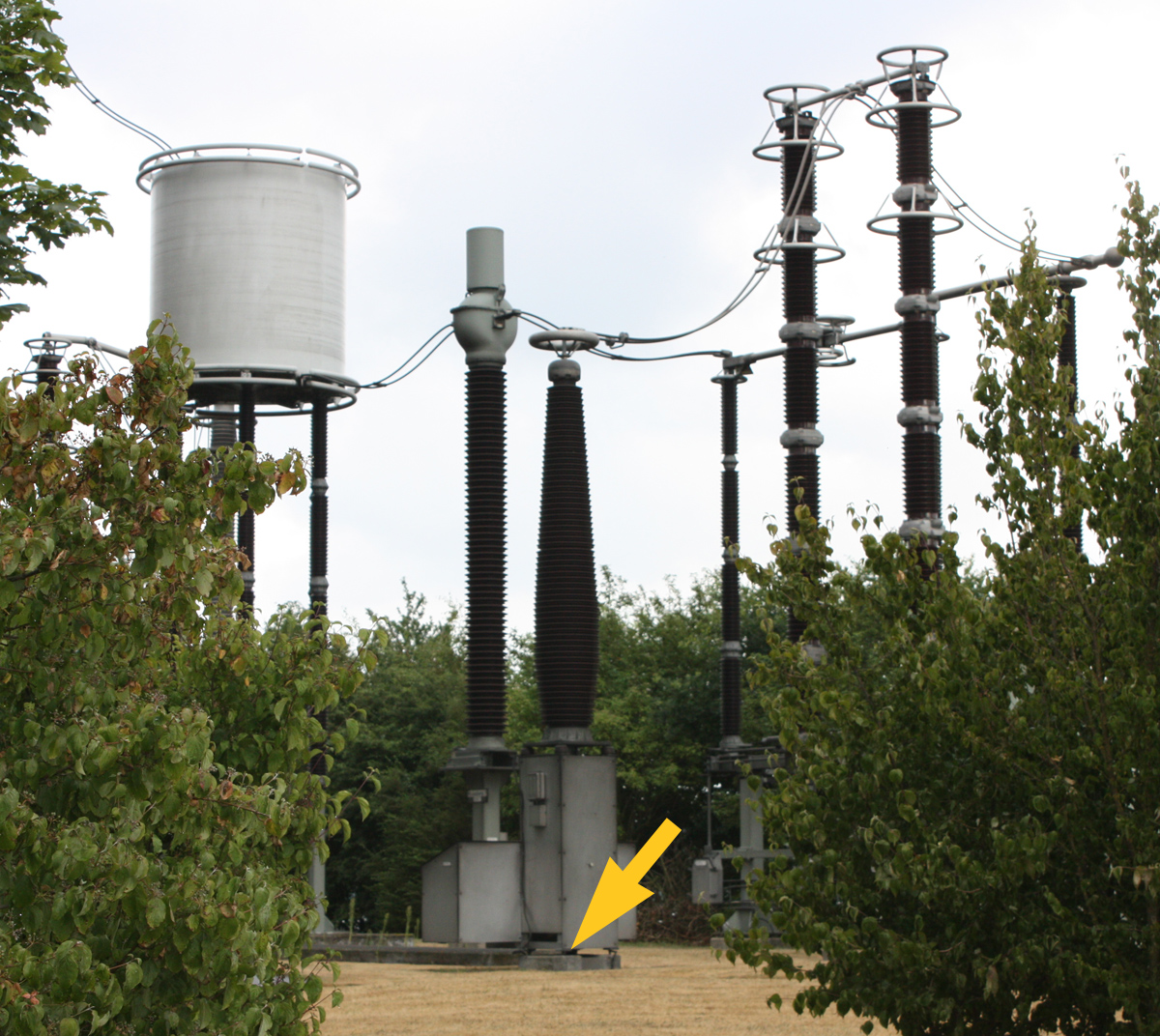Static inverter plant on:
[Wikipedia]
[Google]
[Amazon]
 An HVDC converter station (or simply converter station) is a specialised type of substation which forms the terminal equipment for a
An HVDC converter station (or simply converter station) is a specialised type of substation which forms the terminal equipment for a
 The converter is usually installed in a building called the
The converter is usually installed in a building called the
 The direct current equipment often includes a coil (called a ''reactor'') that adds
The direct current equipment often includes a coil (called a ''reactor'') that adds
 The converter
The converter
 An HVDC converter station (or simply converter station) is a specialised type of substation which forms the terminal equipment for a
An HVDC converter station (or simply converter station) is a specialised type of substation which forms the terminal equipment for a high-voltage direct current
A high-voltage direct current (HVDC) electric power transmission system (also called a power superhighway or an electrical superhighway) uses direct current (DC) for electric power transmission, in contrast with the more common alternating curre ...
(HVDC) transmission line.Arrillaga, Jos; High Voltage Direct Current Transmission, second edition, Institution of Electrical Engineers, , 1998. It converts direct current to alternating current
Alternating current (AC) is an electric current which periodically reverses direction and changes its magnitude continuously with time in contrast to direct current (DC) which flows only in one direction. Alternating current is the form in whic ...
or the reverse. In addition to the converter, the station usually contains:
* three-phase alternating current switch gear
* transformers
* capacitors or synchronous condenser
In electrical engineering, a synchronous condenser (sometimes called a syncon, synchronous capacitor or synchronous compensator) is a DC-excited synchronous motor, whose shaft is not connected to anything but spins freely.B. M. Weedy, Electric Po ...
s for reactive power
* filter
Filter, filtering or filters may refer to:
Science and technology
Computing
* Filter (higher-order function), in functional programming
* Filter (software), a computer program to process a data stream
* Filter (video), a software component tha ...
s for harmonic suppression, and
* direct current switch gear.
Components
Converter
valve hall
A valve hall is a building which contains the valves of the static inverters of a high-voltage direct current plant. The valves consist of thyristors, or at older plants, mercury arc rectifiers. Mercury arc rectifiers are usually supported by ...
. Early HVDC systems used mercury-arc valve
A mercury-arc valve or mercury-vapor rectifier or (UK) mercury-arc rectifier is a type of electrical rectifier used for converting high-voltage or high-current alternating current (AC) into direct current (DC). It is a type of cold cathode gas-fil ...
s, but since the mid-1970s, solid state devices such as thyristor
A thyristor () is a solid-state semiconductor device with four layers of alternating P- and N-type materials used for high-power applications. It acts exclusively as a bistable switch (or a latch), conducting when the gate receives a current ...
s have been used. Converters using thyristors or mercury-arc valves are known as ''line commutated converters''. In thyristor-based converters, many thyristors are connected in series to form a thyristor valve, and each converter normally consists of six or twelve thyristor valves. The thyristor valves are usually grouped in pairs or groups of four and can stand on insulators on the floor or hang from insulators from the ceiling.
Line commutated converters require voltage from the AC network for commutation, but since the late 1990s, voltage sourced converters have started to be used for HVDC. Voltage sourced converters use insulated-gate bipolar transistor
An insulated-gate bipolar transistor (IGBT) is a three-terminal power semiconductor device primarily used as an electronic switch, which, as it was developed, came to combine high efficiency and fast switching. It consists of four alternating lay ...
s instead of thyristors, and these can provide power to a deenergized AC system.
Almost all converters used for HVDC are intrinsically able to operate with power conversion in either direction. Power conversion from AC to DC is called '' rectification'' and conversion from DC to AC is called ''inversion
Inversion or inversions may refer to:
Arts
* , a French gay magazine (1924/1925)
* ''Inversion'' (artwork), a 2005 temporary sculpture in Houston, Texas
* Inversion (music), a term with various meanings in music theory and musical set theory
* ...
''.
DC equipment
 The direct current equipment often includes a coil (called a ''reactor'') that adds
The direct current equipment often includes a coil (called a ''reactor'') that adds inductance
Inductance is the tendency of an electrical conductor to oppose a change in the electric current flowing through it. The flow of electric current creates a magnetic field around the conductor. The field strength depends on the magnitude of the ...
in series with the DC line to help smooth the direct current. The inductance typically amounts to between 0.1 H and 1 H. The smoothing reactor can have either an air-core or an iron-core. Iron-core coils look like oil-filled high voltage transformers. Air-core smoothing coils resemble, but are considerably larger than, carrier frequency choke coils in high voltage transmission lines and are supported by insulators. Air coils have the advantage of generating less acoustical noise than iron-core coils, they eliminate the potential environmental hazard of spilled oil, and they do not saturate under transient high current fault conditions. This part of the plant will also contain instruments for measurement of direct current and voltage.
Special direct current filters are used to eliminate high frequency interference. Such filters are required if the transmission line will use power-line communication
Power-line communication (also known as power-line carrier or PLC) carries data on a conductor that is also used simultaneously for AC electric power transmission or electric power distribution to consumers.
A wide range of power-line communicati ...
techniques for communication and control, or if the overhead line will run through populated areas. These filters can be passive LC filters or active filters, consisting of an amplifier coupled through transformers and protection capacitors, which gives a signal out of phase to the interference signal on the line, thereby cancelling it. Such a system was used on the Baltic Cable
The Baltic Cable is a monopolar HVDC power line running beneath the Baltic Sea that interconnects the electric power grids of Germany and Sweden. Its maximum transmission power is 600 megawatts (MW).
The Baltic Cable uses a transmission voltag ...
HVDC project.
Converter transformer
 The converter
The converter transformer
A transformer is a passive component that transfers electrical energy from one electrical circuit to another circuit, or multiple circuits. A varying current in any coil of the transformer produces a varying magnetic flux in the transformer' ...
s step up the voltage
Voltage, also known as electric pressure, electric tension, or (electric) potential difference, is the difference in electric potential between two points. In a static electric field, it corresponds to the work needed per unit of charge to m ...
of the AC supply network. Using a star-to-delta or " wye-delta" connection of the transformer windings, the converter can operate with 12 pulses for each cycle in the AC supply, which eliminates numerous harmonic current components. The insulation of the transformer windings must be specially designed to withstand a large DC potential to earth. Converter transformers can be built as large as 300 Mega volt amperes ( MW) as a single unit. It is impractical to transport larger transformers, so when larger ratings are required, several individual transformers are connected together. Either two three-phase units or three single-phase units can be used. With the latter variant only one type of transformer is used, making the supply of a spare transformer more economical.
Converter transformers operate with high flux Power Steps In the Four Steps of the Converter per cycle, and so produce more acoustic noise than normal three-phase power transformers. This effect should be considered in the siting of an HVDC converter station. Noise-reducing enclosures may be applied.
Reactive power
When line commutated converters are used, the converter station will require between 40% and 60% of its power rating as reactive power. This can be provided by banks of switched capacitors or bysynchronous condenser
In electrical engineering, a synchronous condenser (sometimes called a syncon, synchronous capacitor or synchronous compensator) is a DC-excited synchronous motor, whose shaft is not connected to anything but spins freely.B. M. Weedy, Electric Po ...
s, or if a suitable power generating station is located close to the static inverter plant, the generators in the power station. The demand for reactive power can be reduced if the converter transformers have on-load tap changers with a sufficient range of taps for AC voltage control. Some of the reactive power requirement can be supplied in the harmonic filter components.
Voltage sourced converters can generate or absorb reactive as well as real power, and additional reactive power equipment is generally not needed.
Harmonic filters
Harmonic filters are necessary for the elimination of the harmonic waves and for the production of the reactive power at line commutated converter stations. At plants with six pulse line commutated converters, complex harmonic filters are necessary because there are odd numbered harmonics of the orders and produced on the AC side and even harmonics of order on the DC side. At 12 pulse converter stations, only harmonic voltages or currents of the order and (on the AC side) or (on the DC side) result. Filters are tuned to the expected harmonic frequencies and consist of series combinations of capacitors and inductors. Voltage sourced converters generally produce lower intensity harmonics than line commutated converters. As a result, harmonic filters are generally smaller or may be omitted altogether. Beside the harmonic filters, equipment is also provided to eliminate spurious signals in the frequency range of power-line carrier equipment in the range of 30 kHz to 500 kHz. These filters are usually near the alternating current terminal of the static inverter transformer. They consist of a coil which passes the load current, with a parallel capacitor to form a resonant circuit. In special cases, it may be possible to use exclusively machines for generating the reactive power. This is realized at the terminal ofHVDC Volgograd-Donbass
A high-voltage direct current (HVDC) electric power transmission system (also called a power superhighway or an electrical superhighway) uses direct current (DC) for electric power transmission, in contrast with the more common alternating curren ...
situated on Volga Hydroelectric Station
The Volga Hydroelectric Station or Volga GES (russian: Волжская ГЭС) also known as the 22nd Congress of the CPSU Stalingrad/Volgograd Hydroelectric Power Station (russian: Сталинградская/Волгоградская ГЭ� ...
.
AC switchgear
The three-phase alternating current switch gear of a converter station is similar to that of an AC substation. It will containcircuit breaker
A circuit breaker is an electrical safety device designed to protect an electrical circuit from damage caused by an overcurrent or short circuit. Its basic function is to interrupt current flow to protect equipment and to prevent the risk ...
s for overcurrent protection of the converter transformers, isolating switches, grounding switches, and instrument transformers for control, measurement and protection. The station will also have lightning arrester
A lightning arrester (alternative spelling lightning arrestor) (also called lightning isolator) is a device, essentially an air gap between an electric wire and ground, used on electric power transmission and telecommunication systems to protect ...
s for protection of the AC equipment from lightning
Lightning is a naturally occurring electrostatic discharge during which two electric charge, electrically charged regions, both in the atmosphere or with one on the land, ground, temporarily neutralize themselves, causing the instantaneous ...
surges on the AC system.
Others
Required area
The area required for a converter station is much larger than a conventional transformer, for example a site with a transmission rating of 600 megawatts and a transmission voltage of 400 kV is approximately 300 x 300 metres (1000 x 1000 feet). Lower-voltage plants may require somewhat less ground area, since less air space clearance would be required around outdoor high-voltage equipment.Location factors
Converter stations produce acoustic noise. Converter stations can generate serious levels of radio-frequency interference, so include design features to control these emissions. Walls may provide noise protection. As with all AC substations, oil from equipment must be prevented from contaminating ground water in case of a spill. Substantial area may be required for overhead transmission lines, but can be reduced if underground cable is used.See also
*List of HVDC projects
This is a list of notable high-voltage direct-current power transmission projects.
HVDC projects for long-distance transmission have two (or rarely, more) converter stations and a transmission line interconnecting them. Generally overhead lines ...
*Rotary converter plant
A rotary converter plant is a facility at which rotary converters convert one form of electricity to another form of electricity. The installed combinations of motors and generators at a plant determine the possible type(s) of conversion. Such ...
*High-voltage transformer fire barriers
High-voltage transformer fire barriers, or transformer firewalls, transformer ballistic firewalls, transformer blast walls, are outdoor countermeasures against cascading failures in a national electric grid. The purpose of these barriers, like co ...
References
{{Reflist High-voltage direct current Electric power conversion